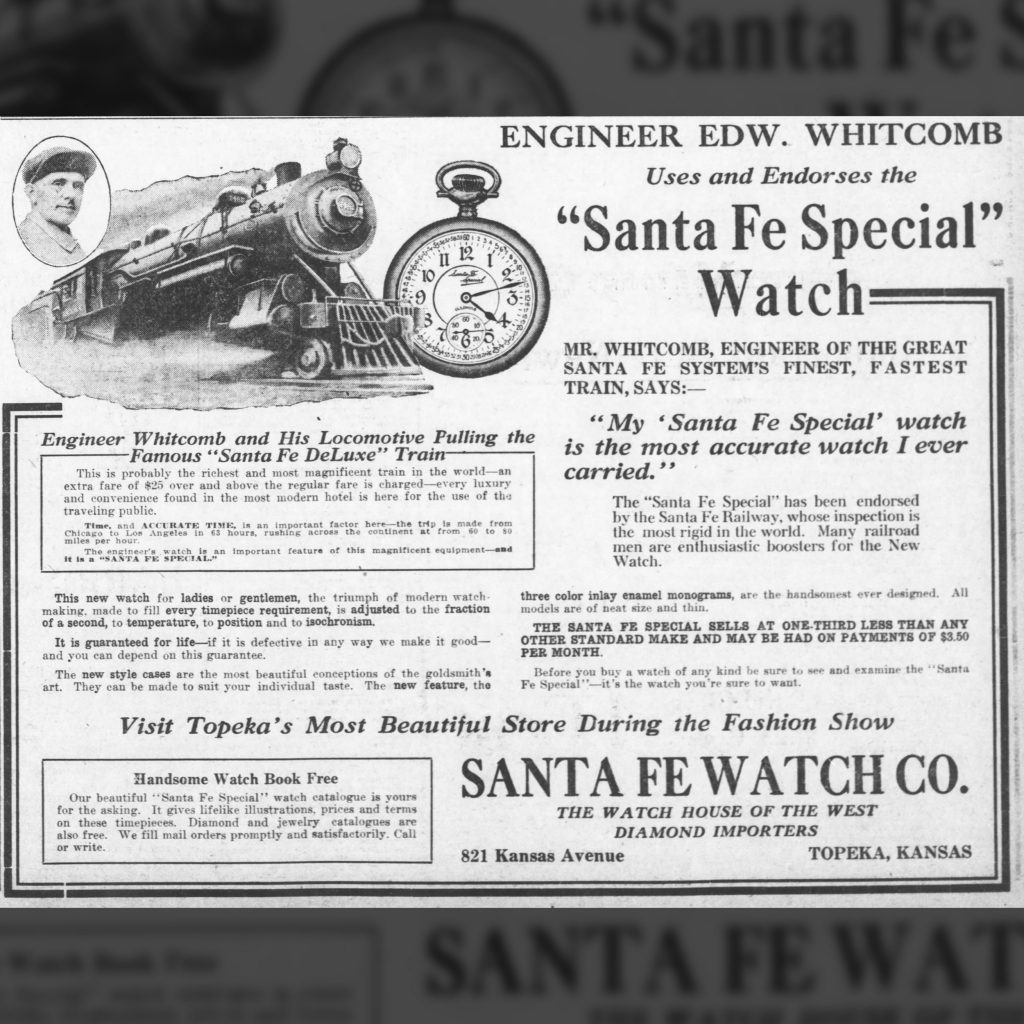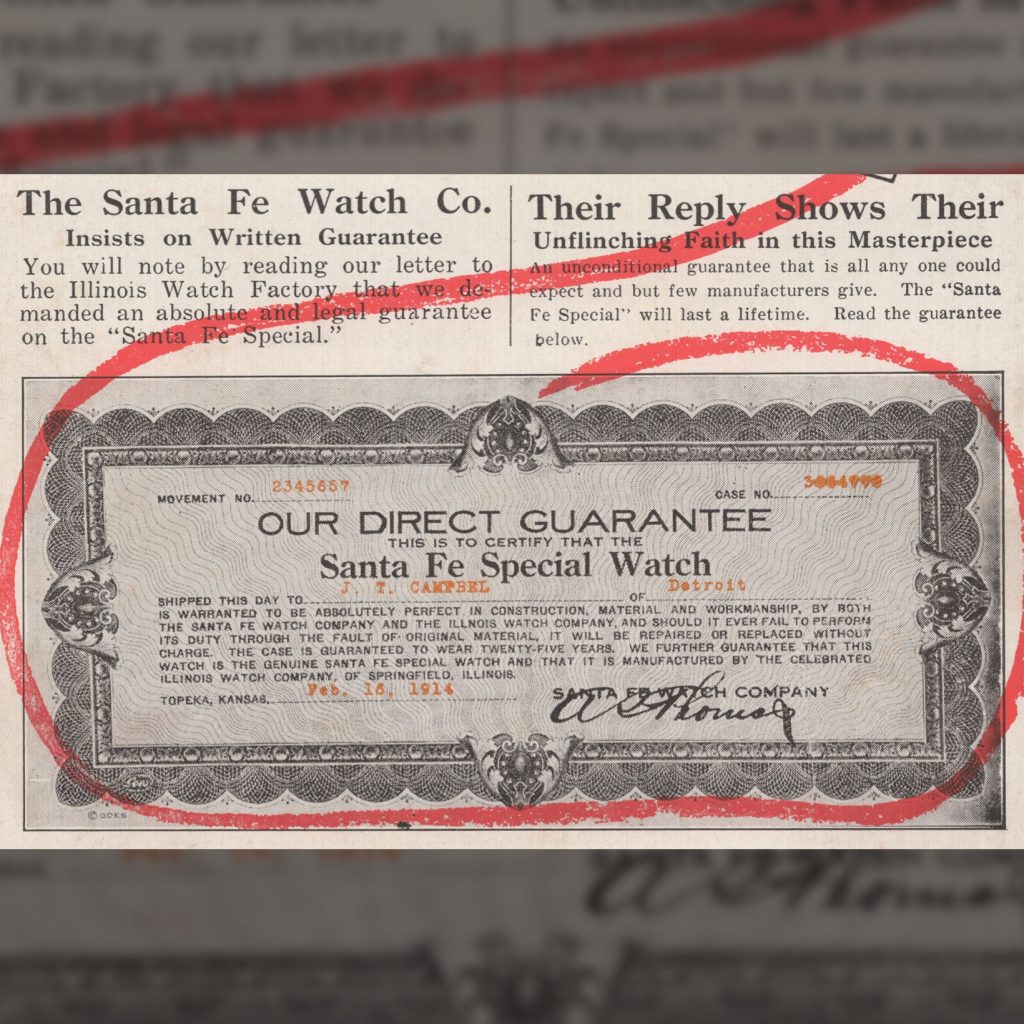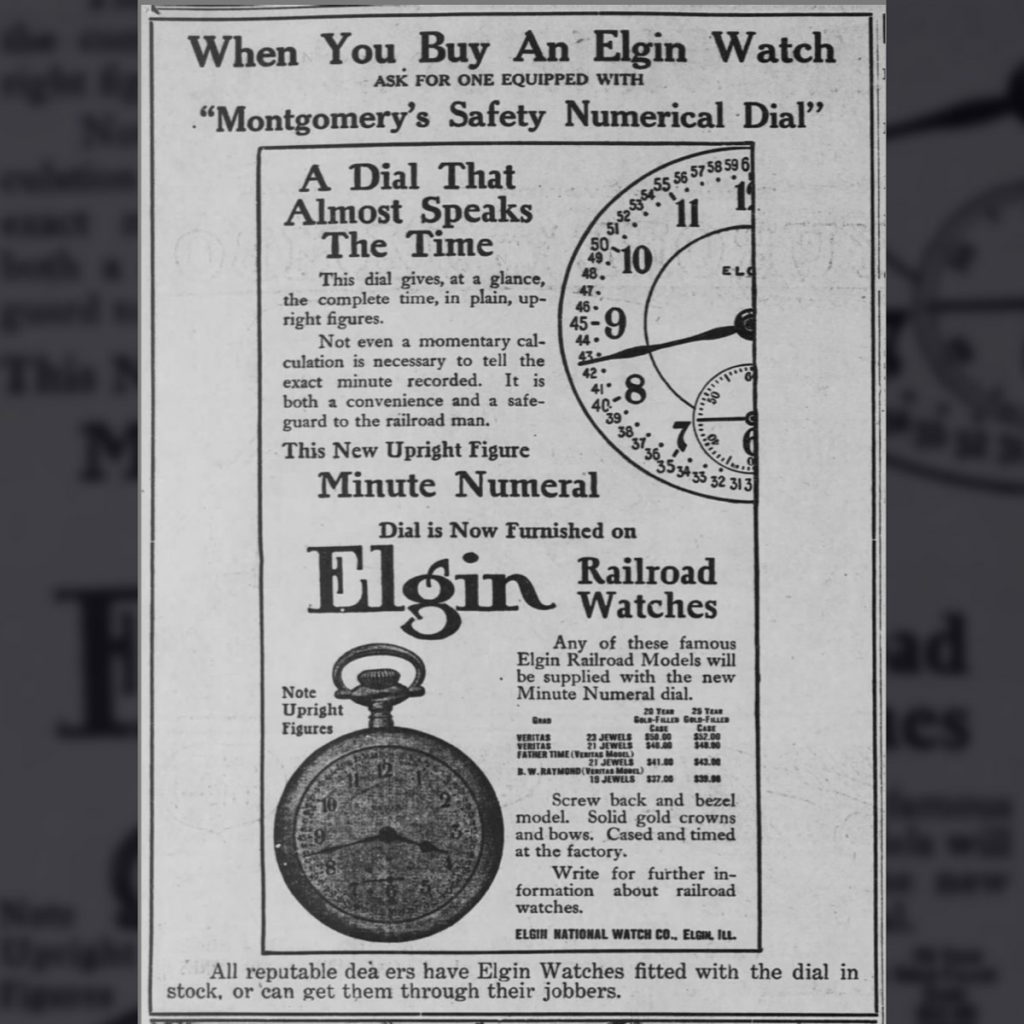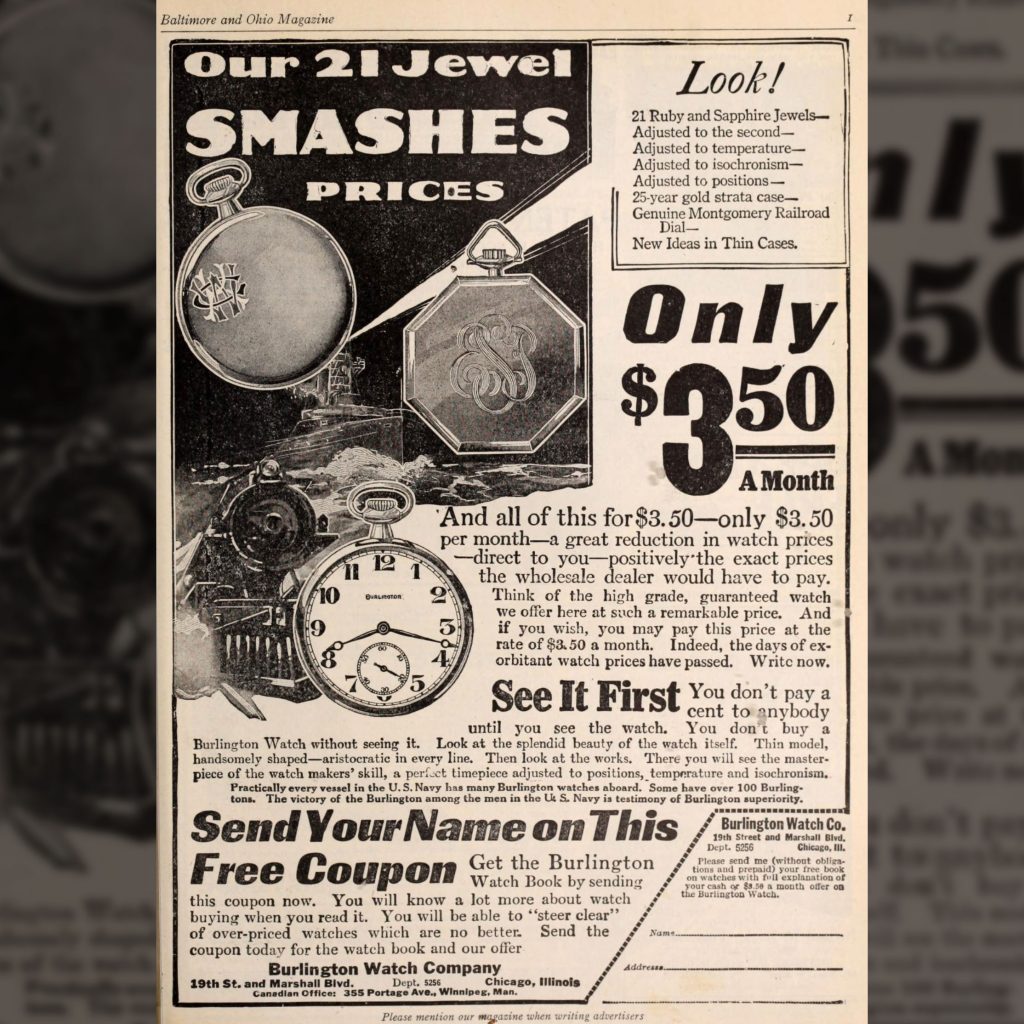Private Label Trade Names on American Pocket Watches: “Santa Fe Special” Part 19

The validity of a “railroad grade” classification is frequently questioned when discussing the Santa Fe Special 16-Size watches sold by the Santa Fe Watch Company. While some point to the acceptance into service on the Santa Fe Railroad to support a railroad grade label, others argue that the watch would not have been accepted on most lines throughout the United States, requiring five positional adjustments.
Both arguments are valid. This is where the subtle nuances of the “railroad grade” classification become apparent. Despite the desire for a clear distinction, every railroad maintained its own specifications for watches accepted into service, usually determined by the General Time Inspector. These requirements also changed over time, so a watch approved for railroad service in 1890 may not have qualified in 1910. Due to the nature of how the time inspection system was developed and controlled, the requirements on many railroads generally became aligned. However, there were always outliers.
One such outlier was the Atchison, Topeka, and Santa Fe Railroad, requiring only three positional adjustments instead of the five specified by most railroads at the time.
This discrepancy provided a unique marketing opportunity for the Santa Fe watch Company. They adamantly advertised the Santa Fe Special guaranteed to pass inspection requirements on the Santa Fe Railroad. The company saved money on movements they purchased from the Illinois Watch Company, only adjusted to three positions, and were able to sell a railroad watch at a less expensive price than most railroad watches offered on the market.
So, was the Santa Fe Special a railroad watch? Yes – As long as we are within the proper context of lines like the Santa Fe Railroad that only required three positional adjustments. Once we expand the conversation to general approval, then no, the Santa Fe Special would not have been widely accepted on most railroads.
The nuances with railroad grade classifications deserve more delicate consideration rather than a black-and-white designation. The Pocket Watch Database now displays “Limited Approval” status on watches like the Santa Fe Special, signifying that some railroads would have accepted the watch into service even though it would not have been widely accepted across the country.




Love your articles. Often get sidetracked from searches, moving from one article to another to another. Could they ever be collated into a book?
Thanks for the kind words, Robert. I am happy to hear you enjoy the articles. I have considered compiling books before, but the internet appears to be a better medium for these. I enjoy the digital aspect of publication and not having a book out there that will inevitably contain bad information no matter how much time I spend researching and fact-checking.